Oak has been a cornerstone of architecture and design for centuries, and is beloved to this day for its durability, versatility, and timeless appeal.
From reclaimed oak steeped in history and character to flawless virgin lumber sourced from sustainable forests around the world, oak remains one of the most sought-after wood species for construction and interior projects - but what gives oak its distinctive characteristics? What makes it so enduring?
In this blog, we’ll explore the history and qualities of oak as a construction material, including the differences between American and European oak, and why this ancient material is so well-adapted for contemporary architectural use and high-end interiors.
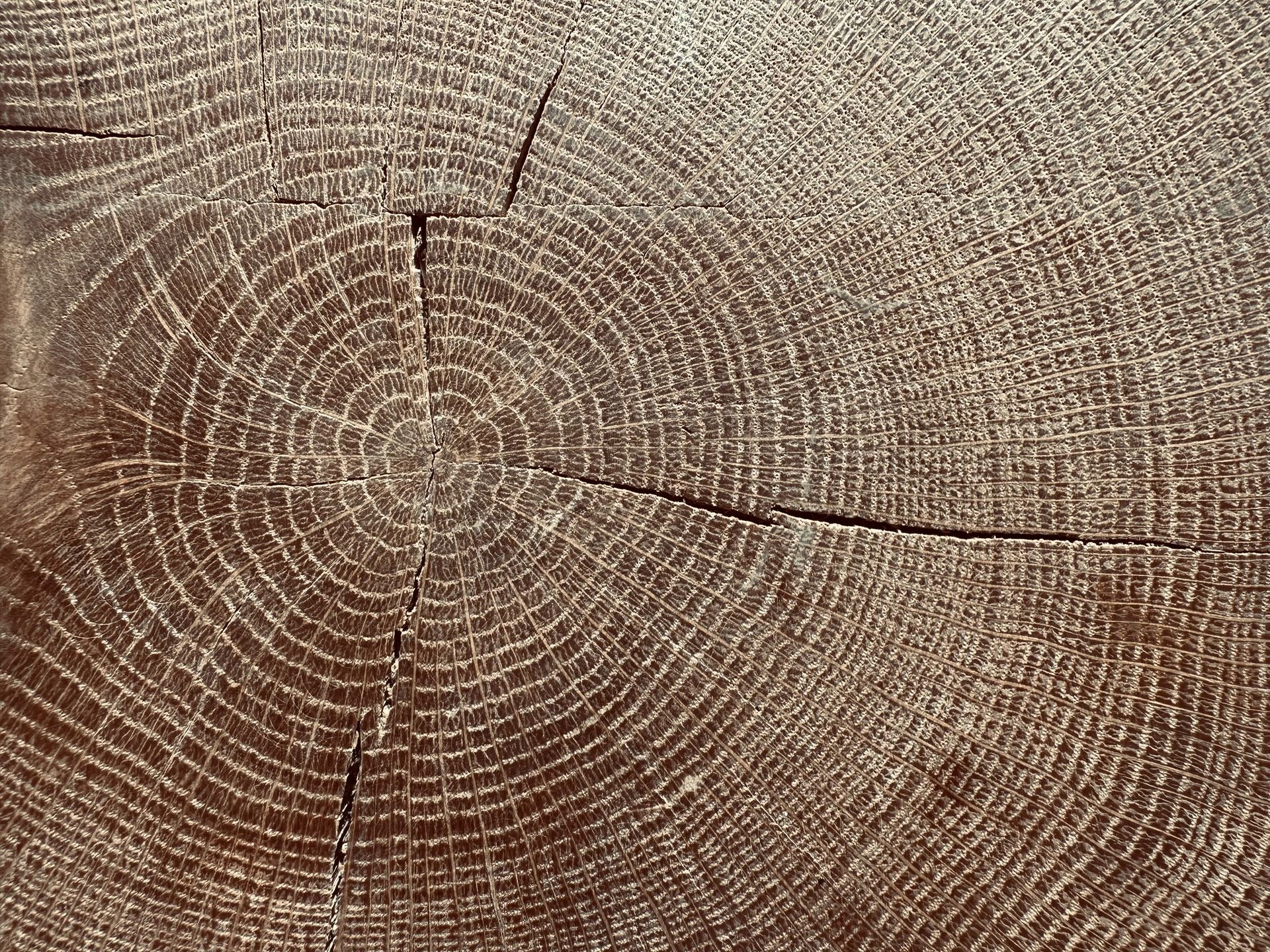
About the oak tree
Oak trees belong to the Quercus genus, which includes over 600 species worldwide, all of them native to the northern hemisphere, where they thrive in temperate climates – although oak trees have been introduced to countries on both sides of the Equator. European oak is commonly found in France, Germany, and the UK, while American oak is widespread in the eastern United States.
Oak trees can live for centuries, with some species reaching over 1,000 years old, and can grow to over 20 meters in height and more than 8 meters wide. They are hardwoods, and mostly deciduous, dropping their leaves in the fall, but some are evergreen. They are known for their lobed leaves, thick trunks, broad, spreading crowns and distinctive acorns.

Characteristics of oak wood
Oak’s slow growth rate and long lifespan contributes to a hard, dense wood, with distinctive grain patterns. Red oak has a Janka hardness rating of 1290, and is used as a benchmark against which the hardness of other woods is often compared.
Oak wood is typically pale golden in color with tight growth rings creating a tight, coarse grain pattern – although depending on species and region, it can range from almost white through to rich medium brown with red or pinkish hues, and wavy grain patterns with dramatic knots and swirls.
A key characteristic of oak is its high tannin content. Tannins are natural preservatives that contribute to the rich color of oak, but also make it naturally resistant to insects and fungal decay, enhancing its longevity. The tannins in oak have historically been harnessed in barrel-making (cooperage) because they impart unique flavor to whiskey, wine and beer.
 Oak ceiling at Westminster palace, London
Oak ceiling at Westminster palace, London
Oak’s history in construction and design
Oak has been used in construction for thousands of years. From medieval cathedrals and Tudor homes to American colonial houses, oak’s strength and longevity have made it a staple in architecture worldwide. French oak, in particular, has long been associated with fine craftsmanship, used to build everything from beautiful châteaux to ornately carved furnishings and sturdy wine barrels.
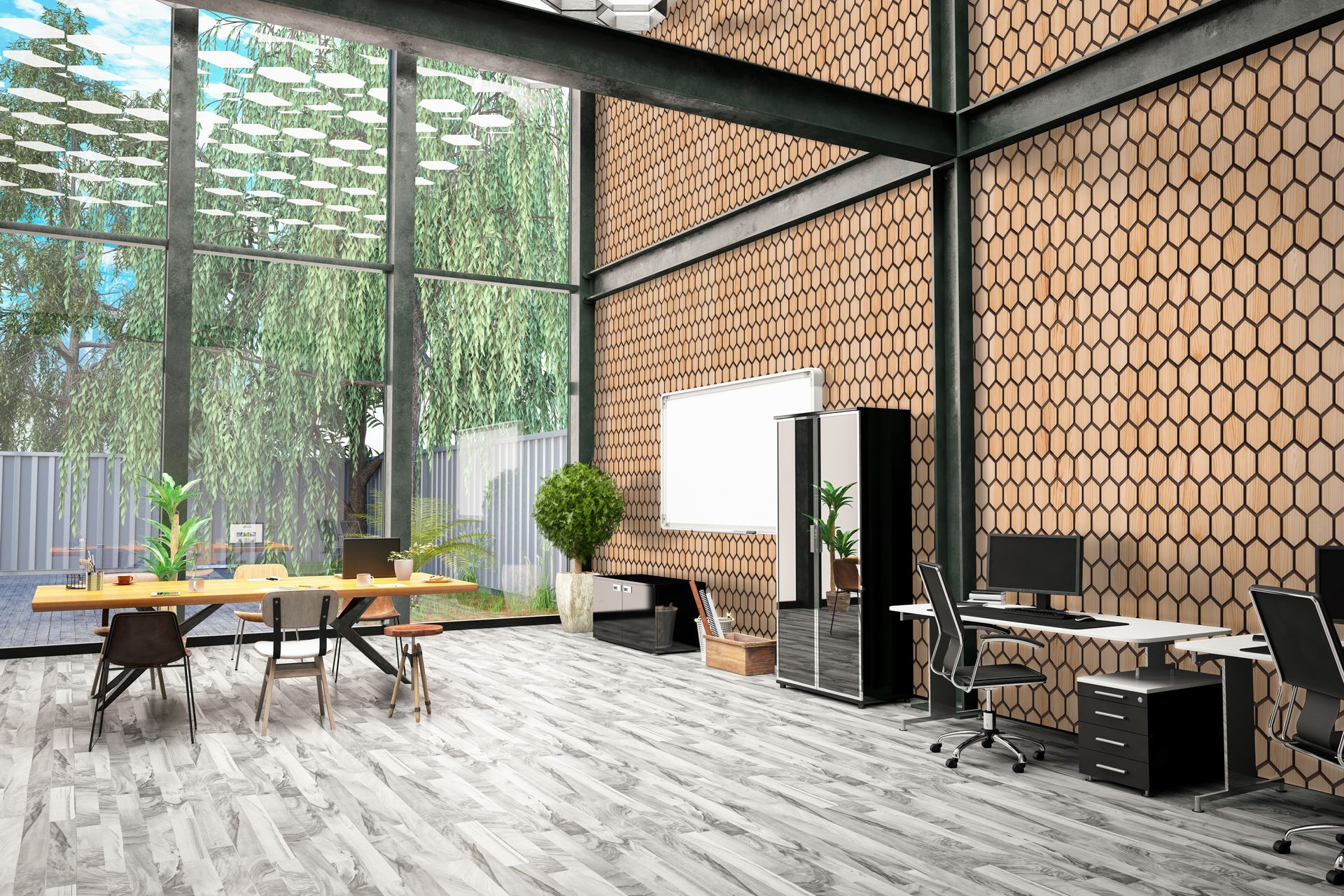
Why oak is an exceptional choice for interiors
Oak is not only beautiful but also highly practical for construction, flooring and various interior applications. Here’s a look at the characteristics that have made it such a popular choice:
Strong & Workable
Oak offers an ideal balance between hardness and workability. On the Janka hardness scale, red oak has a rating of 1290, while white oak has a rating of 1360 – this number refers to the pounds of force (lbf) required to embed a 0.4” steel ball halfway into a sample of oak wood. At this level, oak is very resistant to dents and scratches, but is also easily milled into custom flooring, wall panelling and stair parts with highly refined details that deliver a seamless, luxury look even in high-traffic areas.
Refined Grain Pattern
With its tight growth rings, oak typically delivers a very straight and uniform grain pattern. This can be emphasized or softened through finishing, which makes oak exceptionally well-adapted to all kinds of interior aesthetics, from rustic to contemporary.
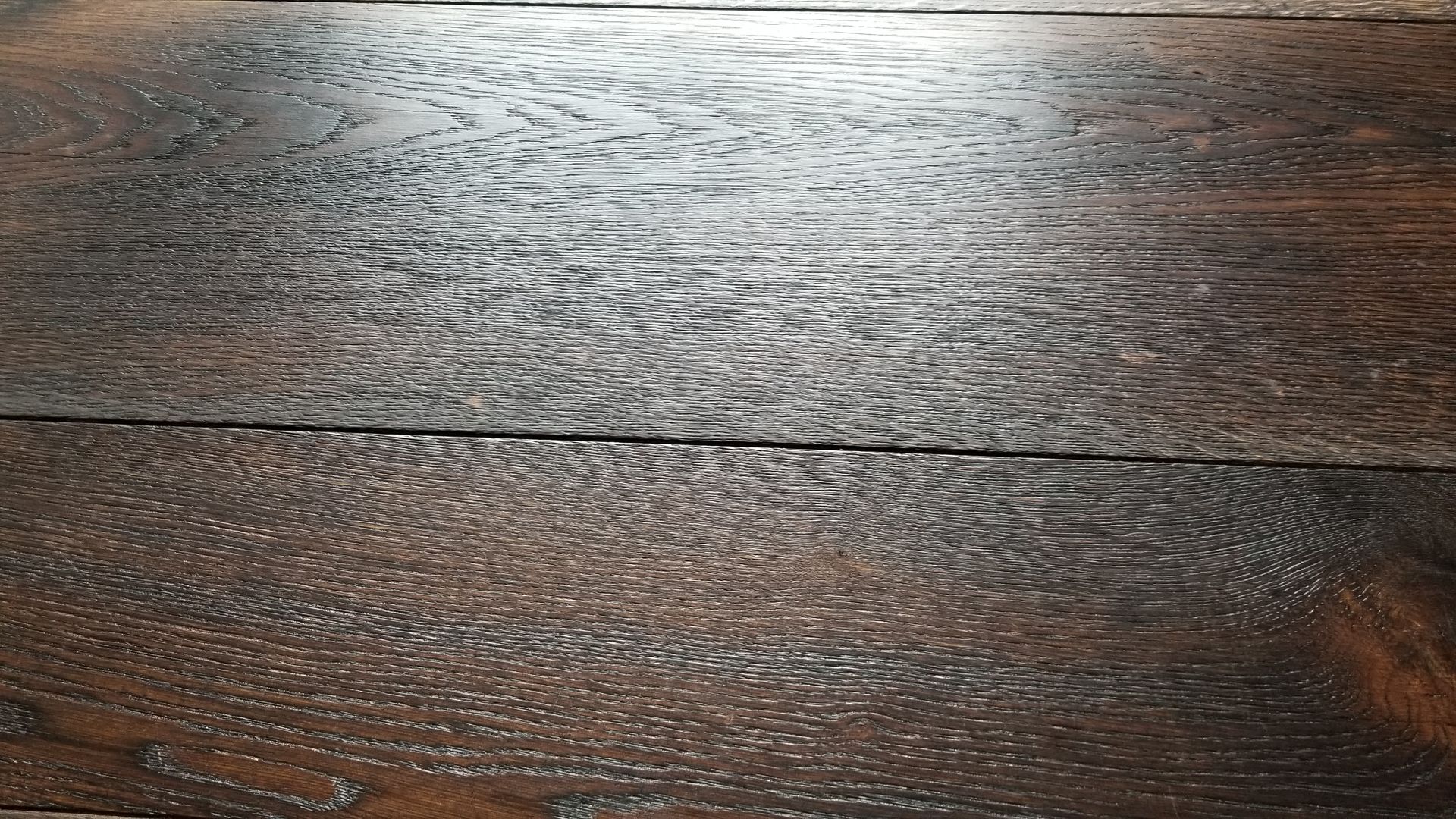
Excellent Stainability
Oak is known for its large pores, which allow it to absorb stains and other finishes readily. It absorbs stains more deeply than other wood types, resulting in a more uniform finish, while its pale color allows designers to achieve a wide range of tones from natural to deep, rich hues.
Sustainability
When sourced and used responsibly, oak is a renewable, sustainable construction material. Its longevity means that architectural products made from oak will last for generations, with a lower carbon footprint than man-made materials.
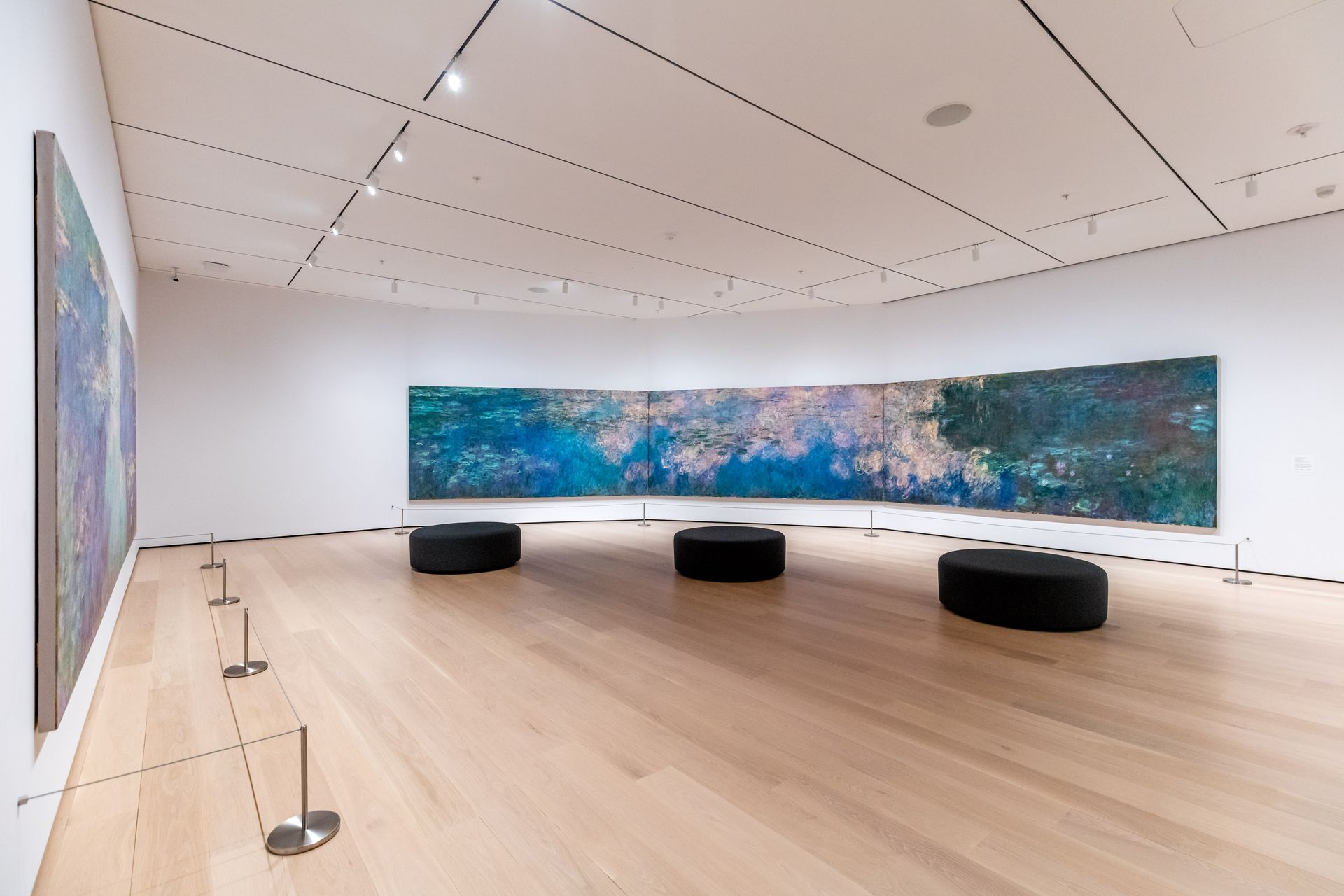 Select grade American white oak installed at MoMA
Select grade American white oak installed at MoMA
American oak vs. European oak
Architects and designers often weigh the choice between American and European oak species, which differ primarily in their visual appearance but also in some inherent characteristics. Here’s a look at the differences:
Color
European oak (Quercus Petraea) typically has a richer, honeyed complexion compared to American oak (Quercus Alba) which is often cooler in tone. American oak comes in white and red variants, with the latter displaying pinkish hues – European and French oak is almost always a white variety.
Size
European oak trees often grow larger than American oaks due to a more temperate climate with higher average rainfall. As a result, it’s possible to mill longer and wider floorboards from European oak trees.
Grain & Stability
Although they grow larger than American oaks, European oak trees also tend to grow more slowly – again, due to climate. As a result, they have tighter growth rings which makes the wood more stable compared to their faster-growing American counterparts, which have larger pores and are more susceptible to warping in high-moisture environments.
Faster growth also means American oak typically has a very uniform, straight grain pattern whereas European oak is more characterful, with wavy patterns created by pronounced medullary rays as well as unique features like pips, burring and swirls.
Tannin Content
European oak has higher tannins, which react well with fuming and staining processes, leading to richer, more complex color variations.
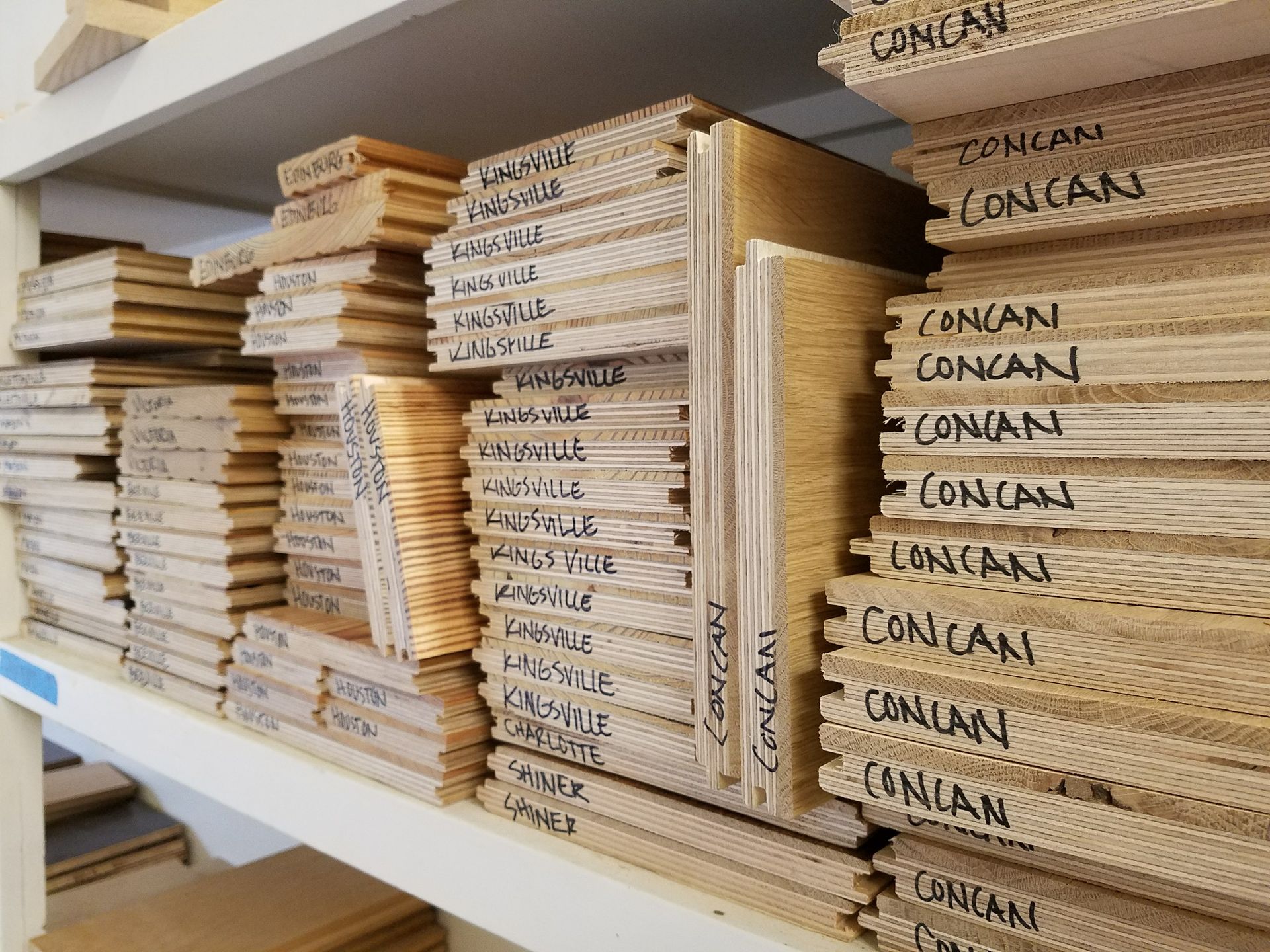
Choosing the right oak for your project
While all oak is beautiful, versatile and strong, there are some things to consider when selecting an oak species that will complement your architectural or interior design project to the fullest, especially when it comes to wood flooring and stair parts. Here’s are some questions to think about:
What aesthetic are you trying to create?
If you’re working on a heritage-grade project or restoration, reclaimed oak is likely to be an ideal choice. Our reclaimed oak flooring is milled from oak beams and joists that often date back hundreds of years, and are packed with quirky features that can instantly lend a sense of history and character to any space. The grain variation offered by European oak also adds interest and distinctiveness.
For contemporary interiors, the paler hues and grain uniformity of American oak help to create a cleaner and more modern look.
Where will it be installed?
White oak is harder than red oak, and European white oak is more stable than American white oak – so if you’re installing oak flooring in a busy area of the home such as a hallway, kitchen or staircase, it’s worthwhile considering how well your preferred species will hold up to wear and tear over time. Choosing engineered over solid oak flooring adds even more stability and moisture resistance.
What’s your preferred finish?
If you have a very specific look in mind for your oak floor – for example a very dark or light stain – American oak is a great choice because of its increased porosity. It absorbs stains easily and uniformly for the most consistent results. If you’re looking for a more natural look that really celebrates oak in its raw form, European oak with its warm tones and pronounced grain is an ideal choice.
Want to learn more?
Whether you're specifying a grand staircase, an inviting hardwood floor, or a striking wood-paneled wall, oak remains an unbeatable choice. If you’re looking for expert guidance on selecting the best oak for your design, don’t hesitate to get in touch!